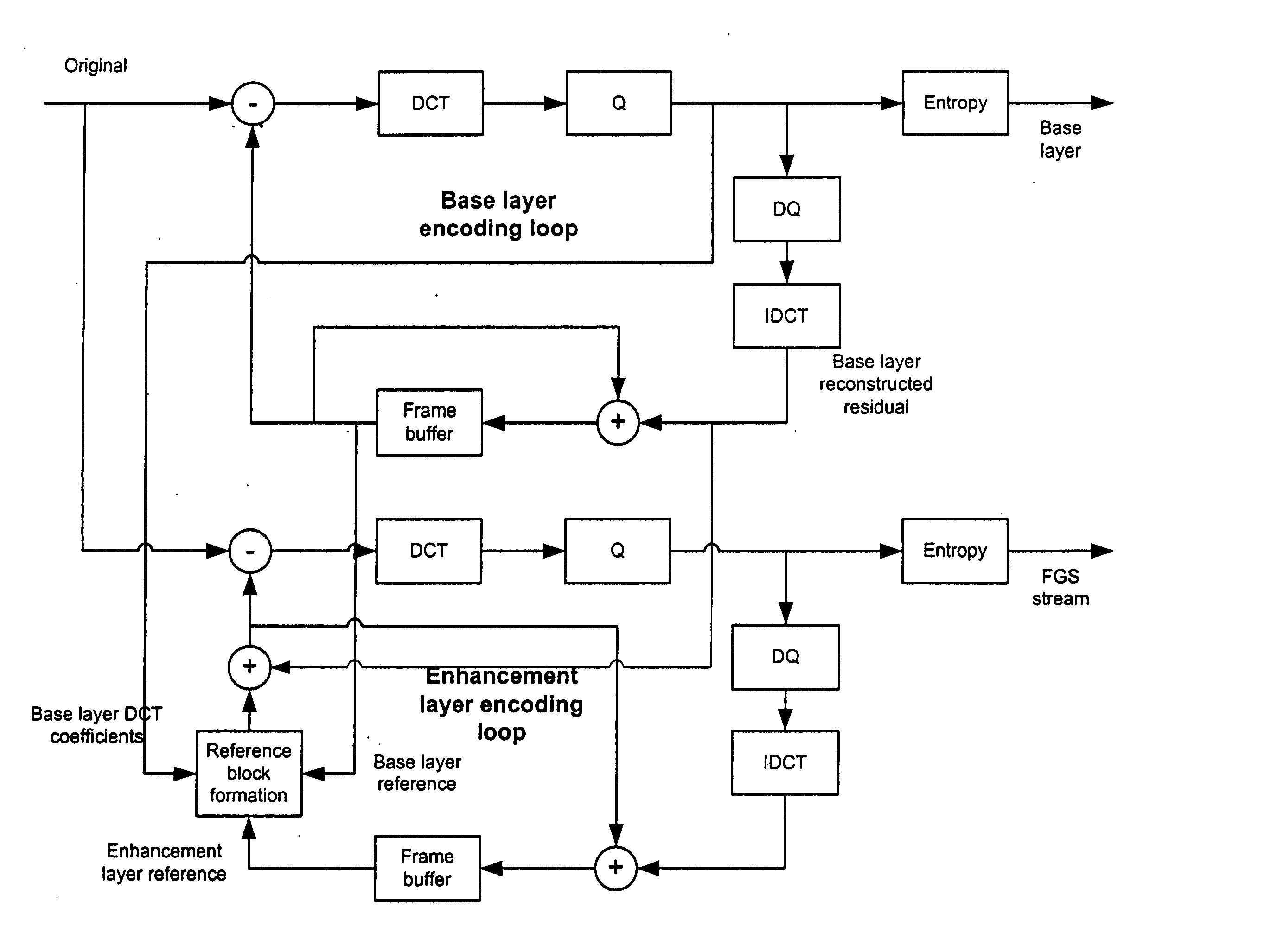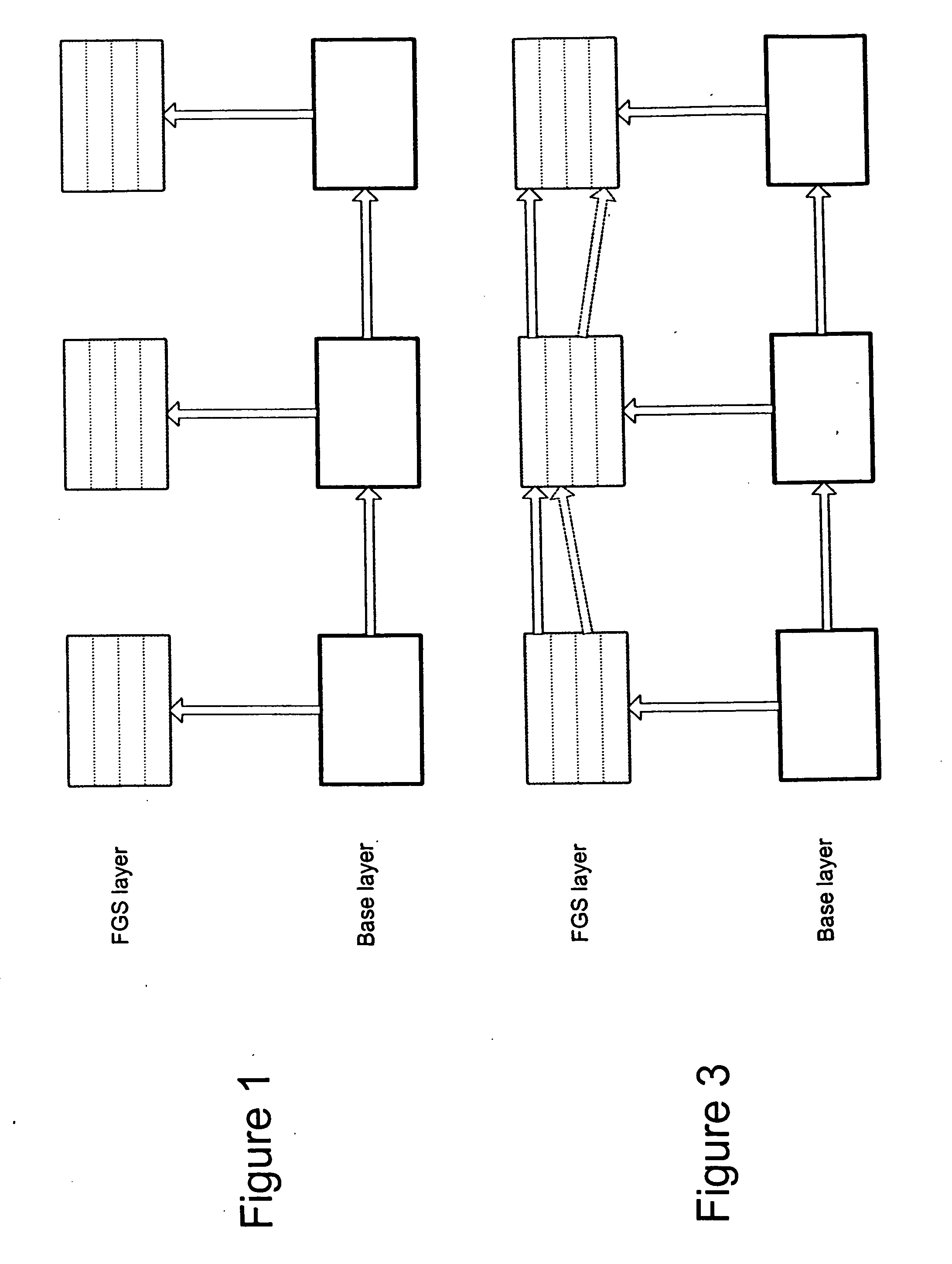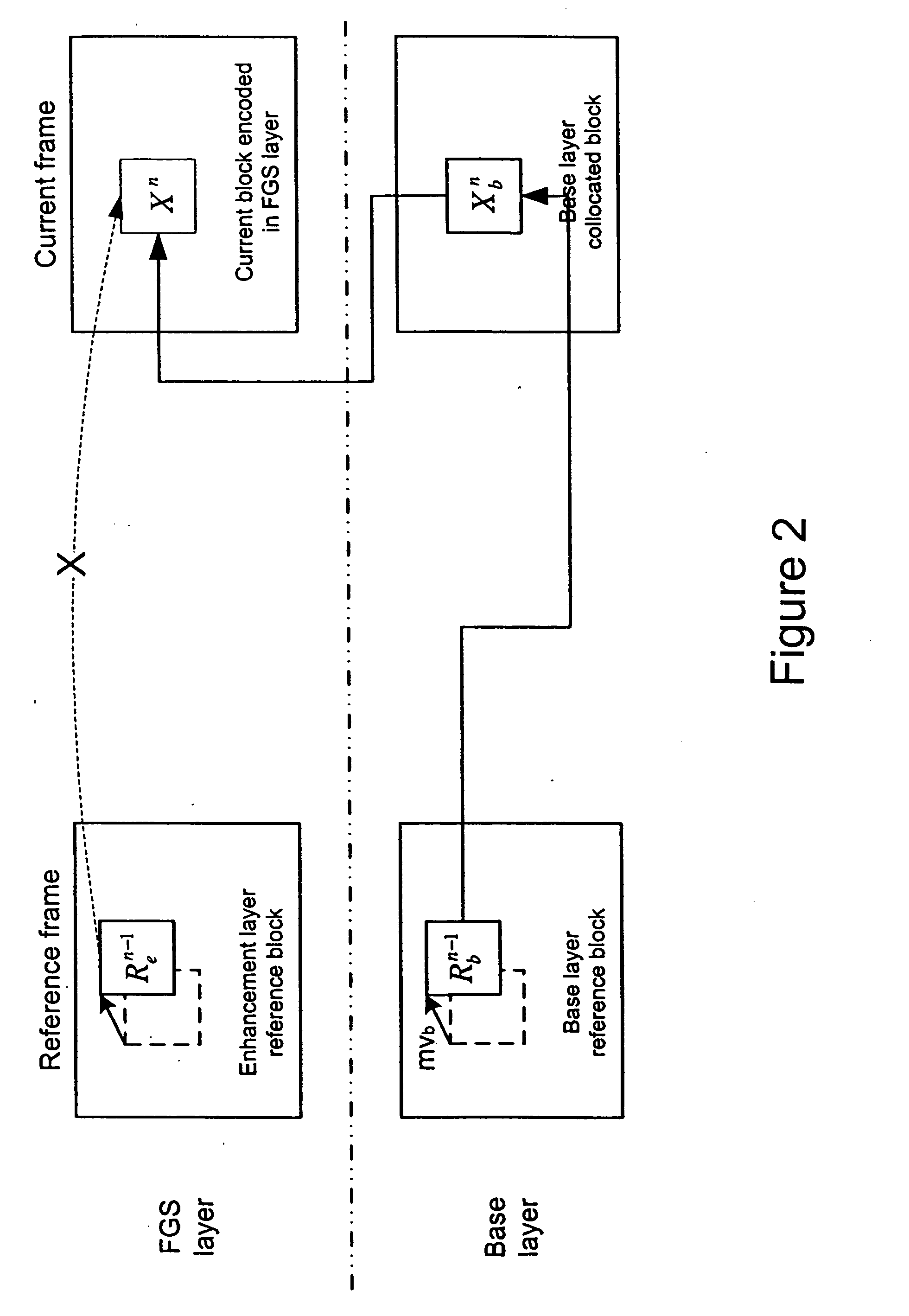Method and system for motion compensated fine granularity scalable video coding with drift control
- Summary
- Abstract
- Description
- Claims
- Application Information
AI Technical Summary
Benefits of technology
Problems solved by technology
Method used
Image
Examples
Embodiment Construction
[0034] As in typical predictive coding in a non-scalable single layer video codec, to code a block Xn of size M×N pixels in the FGS layer, a reference block Ran is used. Ran is formed adaptively from a reference block Xbn from the base layer reconstructed frame and a reference block Ren−1 from the enhancement layer reference frame based on the coefficients coded in the base layer, Qbn. FIG. 5 gives the relationship among these blocks. Here a block is a rectangular area in the frame. The size of a block in the spatial domain is the same as the size of the corresponding block in the coefficient domain.
[0035] In the FGS coder, according to the present invention, the same original frame is coded in the enhancement layer and the base layer, but at different quality levels. The base layer collocated block refers to the block coded in the base layer that corresponds to the same original block that is being processed in the enhancement layer.
[0036] In the following, Qbn is a block of quan...
PUM
 Login to View More
Login to View More Abstract
Description
Claims
Application Information
 Login to View More
Login to View More - R&D
- Intellectual Property
- Life Sciences
- Materials
- Tech Scout
- Unparalleled Data Quality
- Higher Quality Content
- 60% Fewer Hallucinations
Browse by: Latest US Patents, China's latest patents, Technical Efficacy Thesaurus, Application Domain, Technology Topic, Popular Technical Reports.
© 2025 PatSnap. All rights reserved.Legal|Privacy policy|Modern Slavery Act Transparency Statement|Sitemap|About US| Contact US: help@patsnap.com



